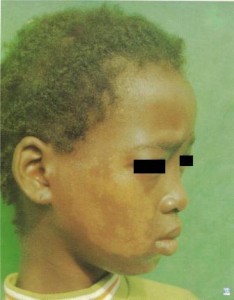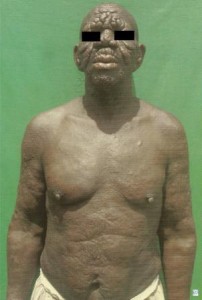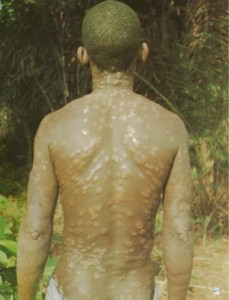Tabagisme et peau
Dr Christophe Hsu – dermatologist. Geneva, Switzerland
What is Hansen’s disease?
- It is an infection caused by a bacteria called Mycobacterium Leprae.
How is it transmitted?
- This is still incompletely understood but it would be airborne.
- It is not transmitted during birth and even prolonged contact does not guarantee transmission.
How is it diagnosed?
- Examination of a skin biopsy is the most reliable and based on clinical suspicion.
- Lepromin tests are helpful to classify the type of leprosy but not to confirm the diagnosis.
What does it look like on the skin?
- The disease is classified according to the immunity of the infected person:
- Tuberculoid (Paucibacillary)(maintained host immunity): lesions tend to be depigmented, few in number with an impaired sensation.
- Lepromatous (Multibacillary)(depressed host immunity): lesions tend to be more voluminous, many in number and the face can be infiltrated (leonine facies).
- Borderline: lesions less specific in between the Tuberculoid and Borderline types.
- Immunological reactions: sometimes the lesions do not contain the bacilli and are due to the immunity developed by the infected person: erythema nodosum leprosum, reversion reactions (increased inflammation because of effective treatment, stress, pregnancy…)
Are other organs affected?
- The nervous system and eyes are the most commonly affected:
- Facial palsy
- Blindness
- Claw-hands
- Foot-drop
- Lower limbs are sometimes amputated due to prolonged bone resorption (osteomyelitis) and skin cancers developing on prolonged ulcers.
How is it treated?
- Treatment regimens vary from country to country.
- Antituberculous drugs, Dapsone and other antibiotics are used. Treatment must be continued for several months or years depending on the type of leprosy.
- Steroids and other anti-inflammatory drugs are used in immunological reactions.
Contributors:
Dr Christophe HSU – dermatologist. Geneva, Switzerland
National Skin Centre. Singapore
Related posts



